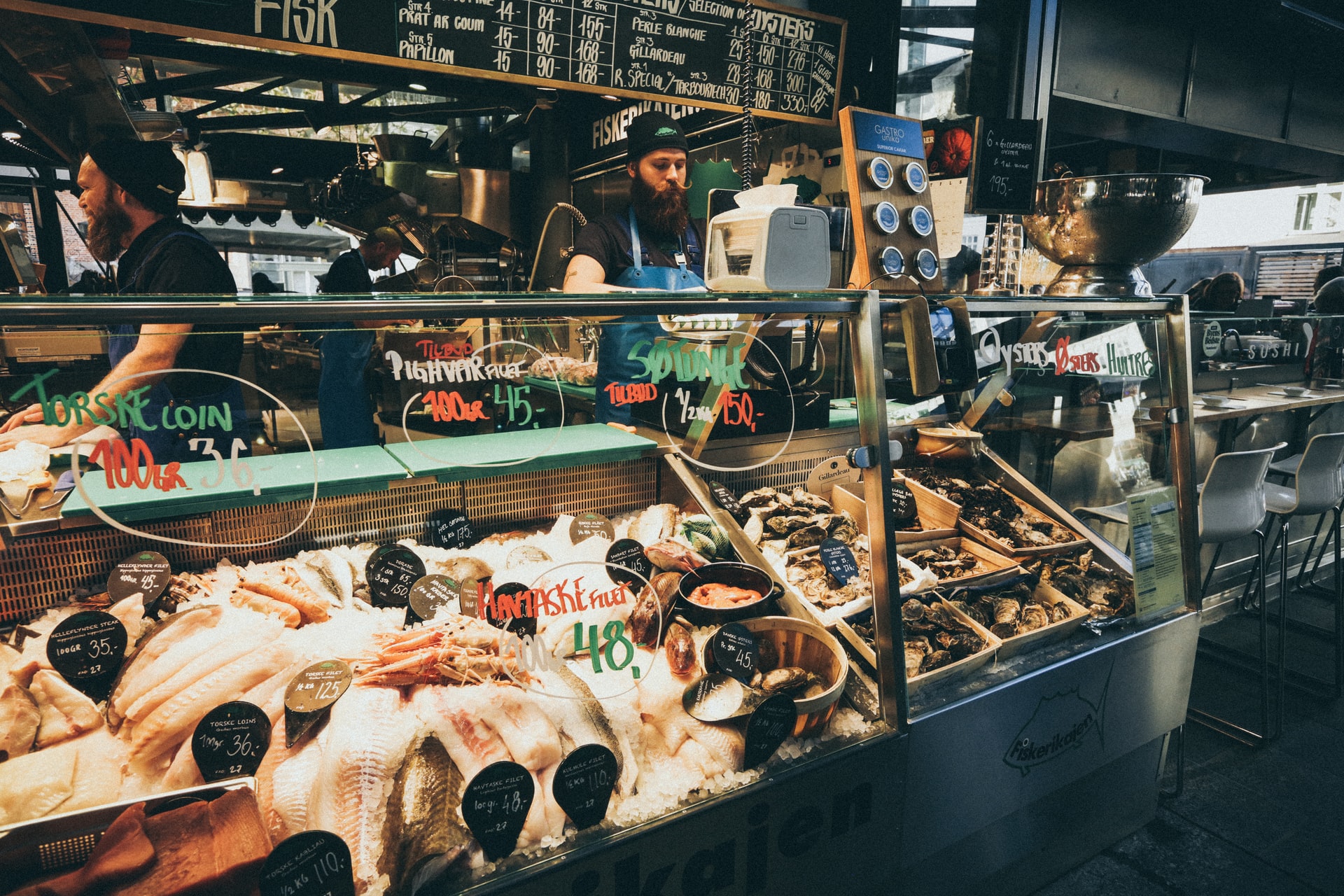
Have you ever noticed a little blue fish on your farmed seafood packaging, or on the glass at your grocer’s fish counter? Those little blue fish are known as “ecolabels” and they’re meant to provide consumers with assurance that the fish they are buying has been farmed sustainably. But what do they really tell us about sustainability?
The term “sustainable” is used a lot these days, but not everyone means the same thing when they say something is “sustainable”. The UN defines sustainability as the ability to meet our current needs without compromising the needs of future generations, and sustainability is generally understood to include social, economic, and environmental dimensions. But, translating that definition into practice is a major challenge.
Aquaculture ecolabels do the monumental task of translating sustainability into a little blue fish. Many ecolabels do this through eco-certification, the process of verifying that a farm is sustainable using a set of sustainability criteria. Farms that receive eco-certification can then use the certifier’s ecolabel on their product.
The criteria eco-certifiers use to verify the sustainability of farms includes things like limits on the use of chemicals and antibiotics, and the use of practices that are intended to limit the effects of farms on the local environment. So, what does an ecolabel mean? It means that the fish in question was raised in a way that the certifier deemed sustainable. But what does the certifier mean by sustainable? That depends on the criteria underlying the certification process.
Studies show that eco-certifiers tend to include a lot of criteria related to environmental issues but few social and economic sustainability issues. Certifiers focus on limiting negative environmental impacts, but there is less emphasis on limiting potential social harms and maximizing the social and environmental benefits we receive from aquaculture. Eco-certification schemes also tend to include criteria related to the local environmental effects of aquaculture (ex. effects on local biodiversity, use of antibiotics and chemicals) but are missing criteria related to some of the far-reaching effects of aquaculture, such as a farm’s carbon footprint and contribution to global food security. Therefore, eco-certification schemes appear to define sustainable aquaculture as farming that has limited local environmental effects. Of course, criteria also differ between schemes, so the way sustainable aquaculture is defined may vary between the many ecolabels in the marketplace.
While the way eco-certification and associated ecolabels define sustainable aquaculture as farming that has limited local environmental effects can be considered incomplete, we should also consider the significant challenge of designing eco-certification criteria that live up to a more comprehensive view of sustainability; in other words, it’s really difficult to appraise “sustainability”, even once you’ve defined it. Certifiers must balance both the completeness and complexity of sustainability criteria that they use with the practical application of those criteria to farms.
These are just a few of the many challenges in developing and selecting sustainability criteria, and how these challenges are addressed will affect how sustainability is defined by ecolabels. So next time you visit the fish counter, remember that not all little blue fish signify the same thing; the definition of sustainability they represent depends on the criteria behind the label. Sustainability isn’t exactly “in the eye of the beholder” – but when it comes to ecolabels, it might be in the eye of the certifier.
Photo by Nick Karvounis on Unsplash













